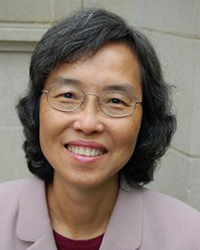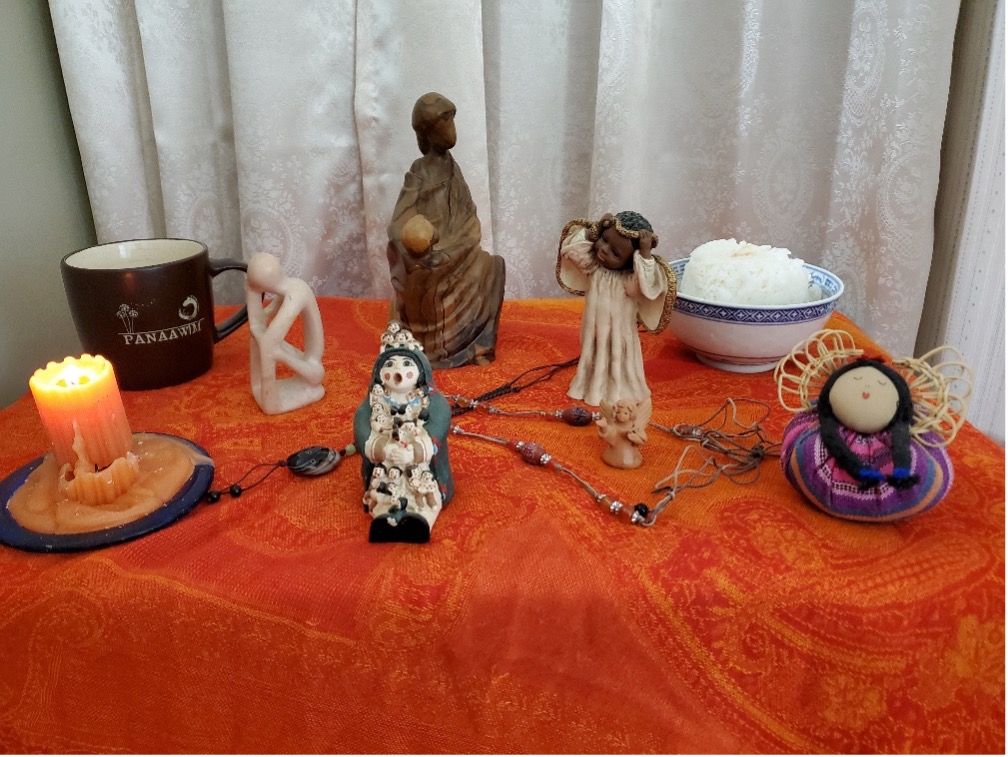
Teaching Spirituality During the Pandemic
I have always thought that a course on spirituality should take place in a supportive environment, and it is best done in person. But something happened that changed my mind.
Last fall, I attended a webinar organized by Kosen Gregory Snyder at Union Theological Seminary. The webinar invited a Native American, a Buddhist, and a Christian leader to discuss the ways that religious and spiritual traditions can address our ecological crisis. This webinar was just what I needed, as I was over-stretched by work and speaking engagements. I was exhausted and depleted. I felt a sense of accompaniment as each speaker shared their spiritual wisdom and paths.
So when I was asked to offer my spring online course “Spirituality for the Contemporary World” to the community, I accepted the invitation with enthusiasm. For over two decades, I have taught courses on various aspects of spirituality in Boston and Atlanta and have accompanied hundreds of students on their spiritual journeys. I saw offering this course to those who may need it during the prolonged pandemic as a vocation and a challenge.
I had not taught a course on spirituality online, let alone taught it for both students at my school and members of the community. The first challenge was how to translate the practice-oriented pedagogy to an online format. I include meditation, breathing exercises, Tai Chi movements, singing, arts, and rituals in my spirituality courses. I emphasize learning by doing and not just listening! How could we do these things in a Zoom setting? As we know by now, even the simple thing of group singing is a challenge on Zoom.
To learn how I might do some of these in my class, I consulted my colleagues at school who have expertise in digital learning. They have given me a lot of encouragement and sound advice and the school will provide production help and equipment if needed. I welcome the challenges of teaching this class as a growing edge of my teaching. I have taught this course in person numerous times, and I am eager to find out what I can learn by teaching it online.
The pandemic has disrupted higher education and its impact will last for years to come. According to a study by Instructure, the company that created the online platform Canvas, the demand for online and hybrid courses skyrocketed, even as in-person learning resumes. Thus, scholars in religion and theological educators need to be better prepared so they can teach these courses well. I know that many seminaries and divinity schools have already used online and hybrid learning for some time and the learning curve may not be so steep.
When the pandemic closed my school and forced our classes to go online, the school has provided training and support for the faculty. One of the challenges was learning how to use the Zoom platform, which was originally designed for business, to create an interactive and participatory learning environment. I learned from my colleague Sarah Bogue, who offered useful tips and exercises for building community through online learning. I intend to use some of her suggestions in my spirituality class.
Since the community participants in my class do not have access to the school’s academic teaching technology, I decided to create a website for the course. At the beginning of the pandemic, when everything shifted online, I helped the network Pacific, Asian, and North American Asian Women in Theology and Ministry update our website, open Twitter and Instagram accounts, and create a YouTube channel. I feel good that I can transfer what I have learned in my community work to my online teaching.
The course website has a blog. I posted the first blog, explaining why I am teaching this course at this time. Many Facebook friends posted prayers and thoughts about the new year in the first week of January and I asked for permission to share a New Year prayer and photos taken to show nature’s beauty on the blog. Participants in the class will be invited to contribute blog posts to share with the class.
The course will have its own Facebook page. I will post the questions to be discussed each week. I plan to use this space for participants to share their practices, such as photos of home altars, places for meditation, and nature walks, as well as spiritual poetry and writing. While my students have their assignments, the posts on Facebook will allow me to gauge community participants’ interest and engagement in the course.

An altar I created
To avoid Zoom fatigue, I will not give long presentations and will minimize the almost routine use of PowerPoint in Zoom teaching. We must justify why we need to have synchronous meetings at all if the meetings are not interactive. Instead, I have invited guest speakers and artists to lead a range of activities, including Notes of Rest, artwork, and learning to write poetry. Some of them have taken my spirituality courses and they are delighted to help as I offer this course to the community.
As a seasoned teacher, trying something new in teaching stretches my pedagogical imagination. We have been in the digital age for decades, and teaching can’t remain the same if we are to catch up with the digital natives, who are well versed in digital technology. Two weeks before the course, I began setting myself in the spirit of teaching this course. I paid attention to my daily rituals (the design of daily life) and practiced Pilates for seniors. I always enjoy teaching spirituality courses because I need them as much as my students do!
Leave a Reply